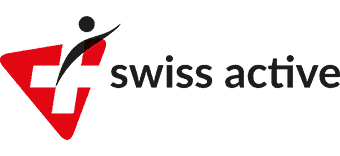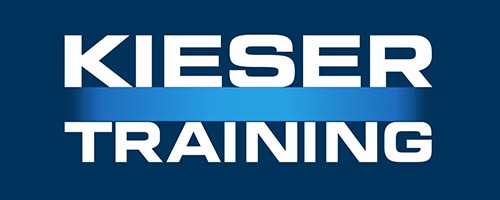Chill out – switch off – deal with stress
We can’t get rid of him. Neither should we, because stress is a vital mechanism. We can better deal with negative stress with physical activity.
“Sorry, I can’t, I’m really stressed out,” my neighbor said recently. She is a single mother with twins aged two and a half and is self-employed. It was 8:00 p.m., the kids were in bed and she wanted to use the “free” time to meet an important deadline the next day.
What is stress?
Colloquially, when we say stress, we usually mean a negative, stressful feeling. We somehow feel energized, hectic, irritable or nervous. In fact, the definition is not that simple. The term “stress” comes from English. It designates a physical quantity and means pressure, load or tension. In the medical-scientific context, the physician and biochemist Hans Selye (1907−1982) coined the term stress. Selye is considered one of the first stress researchers. Over time, stress research has become increasingly interdisciplinary. The complex occurrence of stress is viewed from different perspectives with the help of theoretical models, which makes a uniform definition difficult. Stress researcher Professor Markus Gerber from the Department of Sport and Mental Health at the University of Basel explains stress as follows: “Stress can be understood in the broadest sense as a concept of equilibrium, the status quo (homeostasis) of which is disturbed by internal and external stimuli and can be balanced out through adaptation processes. ”
What is a stressor?
In stress research, a distinction is made between a stressor and a stress reaction. “A stressor is the trigger of stress. In fact, any external or internal stimulus can become a stressor if it disturbs a balance in our organism’s system,” says Gerber. Examples of physiological stressors are, for example, heat, cold or noise. Anger and conflict at work, bad mood or bullying are examples of psychosocial stressors. Loss of control, too much or too little work and deadline pressure are among the psychological stressors.
What is a stress response?
The stress response is the organism’s response to the stressor and results from the interaction with them. “Our organism tries to adapt to restore the disturbed balance,” says Gerber. The reactions are divided into physical, mental, emotional and behavioral stress reactions. Mental reactions include, for example, negative thoughts, thought blocks or concentration problems. Emotional reactions include nervousness, increased irritability, or anxiety. Avoidance strategies such as television, alcohol or drug abuse are among the behavioral stress reactions. As a physical response, our body releases a hormone cocktail that which contains the stress hormones cortisol, adrenaline and noradrenaline. As a result, blood sugar, heart rate and pulse increase. The heart and skeletal muscles are supplied with more blood, while the activity of other organs is reduced. The respiratory rate increases and we start to sweat. In short: Our body is ready for fight or flight or physical and mental peak performance. Stress is not negative per se, but a vital mechanism that allows us to respond to our environment, adapt, evolve and survive.
Stress is subjective
How strong the reaction to a stressor is depends on its frequency, variety, duration and intensity. However, the subjective assessment is also of great importance in modern stress research. If we have the feeling that we can cope with a situation with our existing abilities, stress can have a positive effect (eustress) and push us to perform at our best. Conversely, we experience the stressful situation as negative (distress) if we have the feeling of not being able to solve a problem in important situations.
Constant stress is hazardous to health
If there is no recovery, our body is permanently in a state of alarm. And that can make you sick. “Stress means that people’s well-being is impaired and, in the long term, they develop chronic mental and physical disorders or illnesses and, in the worst case, die from their stress loads,” emphasizes Gerber. The effects include headaches or stomach aches, insomnia or tiredness. Stress permanently weakens our immune system, which is why we have to fight more and more colds.
Stress can also promote unhealthy behavior such as excessive consumption of nicotine, alcohol and medication. In addition, according to Gerber, there is another factor: “Stress is the No. 1 killer of movement. In a study with students, we were able to show that health behavior has deteriorated in all areas during stressful phases. People slept less, ate less healthily and were less physically active.” Not surprisingly, stress is often associated with visceral obesity, which in turn increases the risk of cardiovascular disease.
Stress and the Muscle
Our muscles also react to stress. In addition to positive adjustment effects, such as increased blood circulation, stress – if it persists – can lead to permanent muscle tension and even cramp-like conditions. This can result in migraines, tension headaches or musculoskeletal disorders. Also, some stress hormones cause muscle protein breakdown, while others cause oxidative damage. This reduces muscle strength and impairs its quality and function. As a result, the risk of musculoskeletal injuries, for example, increases even with normal loads. So what to do?
Improvement of stress competence
Dealing with stress can be learned, e.g. B. in stress coping training or stress management training, which aim to develop a so-called stress competence. Information material or courses are offered, for example, by health insurance companies and specially trained trainers. But we can also defy stress through physical activity. Gerber explains: “Physical activity is an effective measure for preventing and coping with everyday stress.” The stress researcher differentiates between four different modes of action: “Physical activity can help to reduce stressors, strengthen our personal resources, alleviate stress reactions and strengthen our health.”
Reduce stressors with physical activity
Physical activity can help to prevent stressors from occurring in the first place or to reduce them. “Physical activity probably has the greatest effect on chronic diseases, which themselves act as significant stressors.” One example is chronic back problems. For example, strength training can help prevent, alleviate, or eliminate them. “In this context, one speaks of instrumental coping or problem-focused stress management. In other words, you can actively do something to prevent the stress-causing circumstances from occurring in the first place,” says Gerber.
Strengthen resources with physical activity
However, physical activity also has a stress-buffering effect if it strengthens personal resources and makes us more resilient to stressors and with regard to the stress response. One of the resources that physical activity can potentially empower is self-efficacy. On the one hand, this means motor skills and the ability to plan and stick with it despite barriers. What is also meant is the conviction that one can master challenges on one’s own. Strength training can support the feeling of self-efficacy and also contribute to improved self-esteem. This, along with a positive worldview, can result in less severe stress responses.
Reduce stress reactions
There is another stress-buffering effect. Gerber explains, “Physical activity can reduce our physiological and psychological stress responses and buffer their adverse health effects.” For example, the hormonal response (e.g. cortisol release) and the cardiovascular response (e.g. heart rate) can be dampened in strength and reduced in duration.
Strengthen health with physical activity
Physical activity also strengthens our health and thus our resistance to stress. “It acts on almost the same health risk factors as stress – but as a compensatory counterbalance.” Incidentally, it is assumed that people who are in good health through regular physical activity can be under high stress for a long time – without physical or psychological consequences . In this sense: Physical activity helps to strengthen our resilience and to stay calm and healthy when dealing with stress. So: stay tuned, keep training and stay calm – even if things don’t go smoothly.
©swiss active – Legal action will be taken in response to copying or other duplication.
Author
Thanks to a standardized product, high-quality training and therapy machines and the successful franchise system, Kieser Training has become a strong international brand over many years. Kieser Training stands for the uncompromising focus on a product that is unmistakable on the market. At Kieser Training, quality means meeting and constantly exceeding the expectations and requirements of our customers. Because the brand name is a promise, we must ensure that our customers receive a consistent and equally good service in every establishment. Kieser Training’s quality management checks this regularly.




